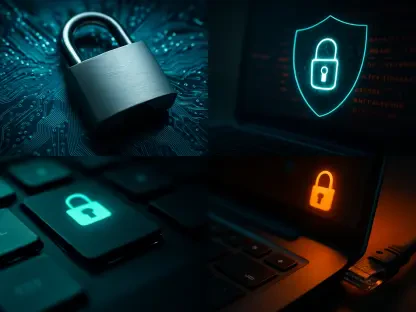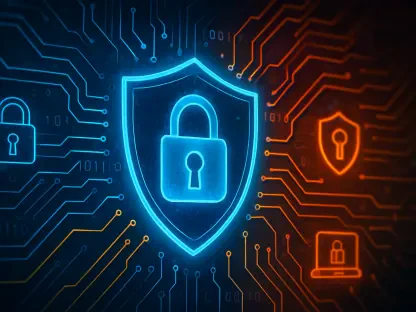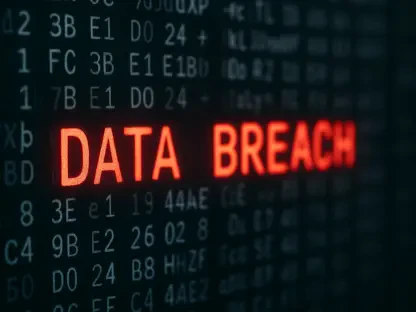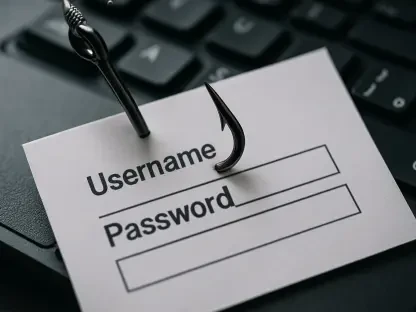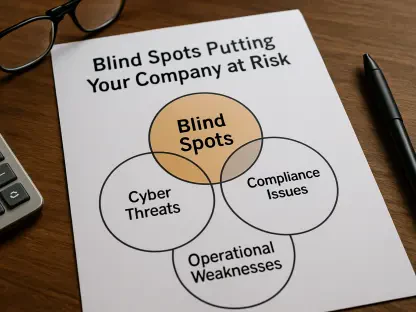In a digital landscape where trust is the cornerstone of security, what happens when that trust becomes a weapon? Since July, a shadowy phishing platform known as Whisper 2FA has orchestrated nearly one million attacks, turning multi-factor authentication (MFA)—a supposed shield—into a gateway for cybercriminals. This staggering figure isn’t just a statistic; it’s a wake-up call to the stealthy evolution of cybercrime, where even the most relied-upon defenses are being outsmarted.
The Rising Threat of Sophisticated Phishing
The significance of this issue cannot be overstated. Whisper 2FA isn’t a fleeting nuisance but a pivotal player in the Phishing-as-a-Service (PhaaS) arena, ranking alongside notorious tools like Tycoon and EvilProxy. Its rapid ascent highlights a critical vulnerability in today’s cybersecurity frameworks: as organizations lean heavily on MFA to protect sensitive data, attackers are finding ways to exploit it. This platform’s ability to impersonate trusted brands and bypass conventional security measures makes it a formidable adversary in the ongoing battle against digital fraud.
A Deceptive Powerhouse: How It Operates
At the heart of Whisper 2FA lies a chillingly effective mechanism. Unlike traditional phishing kits that stop after snagging a password, this tool uses AJAX technology for real-time communication between a victim’s browser and the attacker’s server. This allows it to continuously harvest credentials and MFA codes until a valid token is secured, rendering standard authentication protections nearly obsolete. The scale of its impact is evident, with industries from tech to finance falling prey to its relentless loops.
The tactics employed are as cunning as they are diverse. Attackers deploy urgent, hyper-realistic prompts mimicking giants like Microsoft 365 or Adobe, often using fake invoices or voicemail alerts to pressure users into compliance. These lures are designed to exploit human urgency, tricking even cautious individuals into surrendering sensitive information without a second thought. It’s a psychological game as much as a technical one, leveraging familiarity to lower defenses.
Evolving Defenses: The Arms Race Against Detection
What further sets this platform apart is its rapid adaptation to scrutiny. Early versions featured visible code comments and minimal obfuscation, making them easier to dissect. However, recent updates have introduced layers of complexity with Base64 and XOR encoding, alongside anti-debugging traps like infinite loops that freeze browsers during analysis. These advancements reflect a clear intent to stay ahead of cybersecurity experts, turning every attempt at investigation into a frustrating dead end.
The sophistication doesn’t stop at evasion. Real-time validation through command-and-control systems ensures stolen data is instantly verified, streamlining the attack process. This seamless relay of information between victim and attacker minimizes delays, allowing cybercriminals to act swiftly on compromised accounts. It’s a stark reminder of how phishing tools are no longer crude scripts but polished, professional-grade software.
Voices from the Frontline: Expert Warnings
Cybersecurity leaders are sounding the alarm on this growing menace. Researchers at Barracuda have described Whisper 2FA as a prime example of phishing’s transformation into a business-like operation. “These kits are built and sold with the polish of legitimate products, complete with updates and customer support for criminals,” a recent report stated. This professionalization marks a troubling shift, where cybercrime mirrors the structure of legal enterprises.
The real-world impact is equally concerning. Case studies reveal how employees, deceived by urgent DocuSign impersonations, have handed over MFA codes under the guise of routine document signing. Such incidents illustrate the platform’s deceptive strength, exploiting not just technology but human behavior. Barracuda’s analysis points to lightweight AJAX requests as a key factor in evading detection, a departure from older, clumsier reverse proxy methods.
Countering the Threat: Steps to Stay Safe
Combating a tool as advanced as this demands a multi-layered approach. Organizations must pivot to phishing-resistant MFA solutions, such as hardware tokens or biometric authentication, which are far less susceptible to credential harvesting loops. These alternatives disrupt the repetitive tactics that platforms like Whisper 2FA rely on, offering a stronger barrier against unauthorized access.
Beyond technology, human vigilance remains critical. Training programs should focus on teaching employees to recognize suspicious prompts, especially those demanding immediate action like fake alerts or invoices. Coupling this awareness with robust security layers—firewalls, email filters, and endpoint protection—can intercept attacks at various stages, reducing the likelihood of a breach.
Continuous monitoring is another essential defense. Threat intelligence tools can detect unusual login patterns or real-time data exfiltration, providing early warnings of potential compromises. By staying proactive and integrating these strategies, businesses can build resilience against not just this specific threat but the broader wave of PhaaS-driven attacks reshaping the digital threat landscape.
Looking Back, Moving Forward
Reflecting on the chaos sown since July, it was evident that nearly one million phishing attempts marked a turning point in cybercrime’s evolution. The cunning use of AJAX, paired with relentless credential harvesting, had exposed glaring gaps in traditional security measures. Each attack served as a lesson in the need for adaptability against an ever-shifting adversary.
The path ahead demanded innovation beyond mere reaction. Exploring next-generation defenses, such as AI-driven anomaly detection and zero-trust architectures, offered hope for outpacing these threats. Strengthening global collaboration among cybersecurity experts also emerged as a vital step, ensuring that knowledge and resources were shared to fortify collective defenses against the next wave of sophisticated phishing campaigns.


